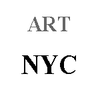Artistic literature: How to see the invisible How to learn the secrets of creation at a crucial moment in art history
Author Kim Taejin
Published Cassiopeia
Published on August 17, 2017.

How to See the Invisible - Most books on art history believe that the Renaissance began in the 15th century. However, it is peculiar that it arose simultaneously in two regions where there was no interaction with each other, summarizing the pattern. One is the Italian Renaissance in Florence, and the other is the Nordic Renaissance in areas called Flanders, such as Brugge and Ghent. The Italian Renaissance brought ancient myths and historical stories to paintings based on humanist traditions and technically developed 'welcomes' based on perspective and anatomical knowledge. On the other hand, the Nordic Renaissance produced delicate and detailed paintings of many objects based on oil painting techniques while maintaining the Christian tradition.
But why did the Renaissance arise in these regions? These regions have something in common. First of all, both Florence and Flanders were cities of wealthy merchants. In addition, a relatively free social atmosphere was formed because it was slightly alienated from church interference or solid political power. Merchants who sought to rise to the status based on their wealth created portraits to show their dignity, feigned great money to lay altars to the church, and competitively decorated family chapels. It opened an excellent opportunity for painters and sculptors. Competition among artists intensified as talented people flocked to these regions, resulting in technological innovations.
The two camps, which had gone their separate ways, leaped forward by accepting each other's strengths at the end of the 15th century, and in the process, the Italian Renaissance gave them a clear advantage. If Flemish art was retreating or retreating from the initial innovation, Florence art developed remarkably as artistic achievements piled up. This gap between the two camps is evident in the later Nordic artists' hurry to imitate Italian paintings. The Italian flowerbeds were able to gain the upper hand because of their active acceptance of the humanist tradition. Like the Plato Academy, founded and supported by the Medici family, the so-called think tank of the Renaissance movement was working well, and artists actively embraced humanism and claimed to be liberal arts. We have seen earlier that this freed the position of an artist from simply a lowly artisan. Da Vinci, Michelangelo, Raphael, and others, who eventually became called great artists, emerged from this background.


![[100 Challenge] DanJi’s reading note_21](http://artnycnewyork.com/cdn/shop/articles/IMG_2582_1100x.jpg?v=1705510682)